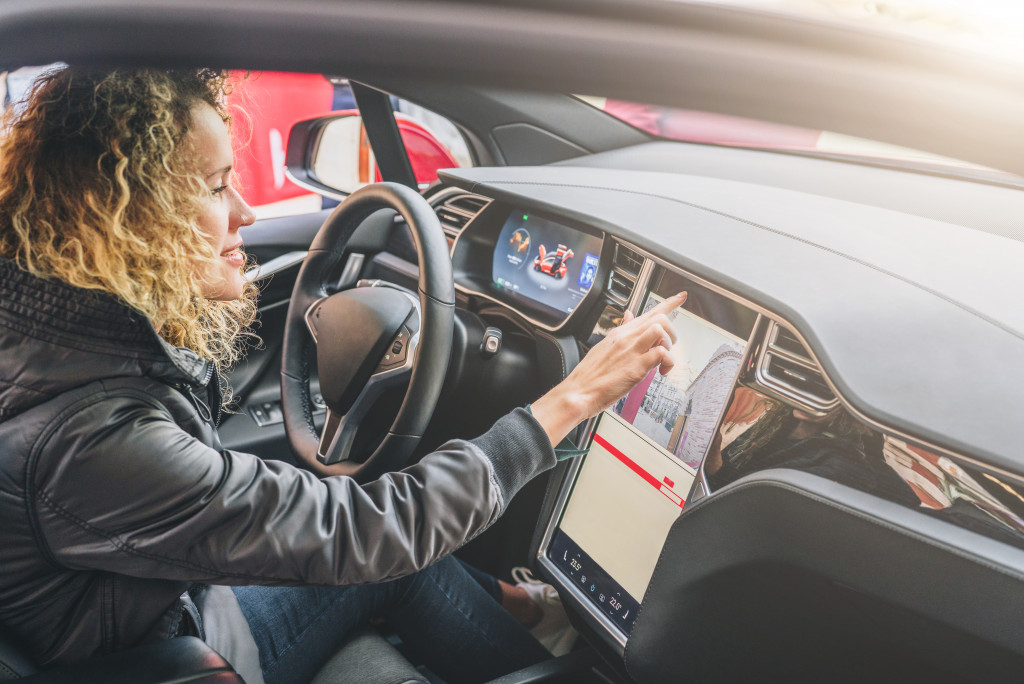With the rise of technology, we are now close to the future. There are now cars with driverless features due to the emergence of artificial intelligence or much known as AI. The autonomous cars we know now might be considered in its newborn stage since it’s just starting its development. There are no legally operating and fully driverless cars in the U.S. yet although there can be considered self-driving — their self-automation may vary from cars that we know.
There might be confusion with autonomous, automated, and self-driving. A self-driving car can drive itself and would fall under Level 3 or 4 since it would still need a driver to be present, autonomous is used for cars that can be capable of driving on their own, making their choices while an automated car would follow another person’s orders to drive itself.
How do autonomous cars work?
Autonomous or driverless cars are capable of operating without humans having to start their engines nor push down their accelerators. They do not need any human involvement and instead rely on sensors and software to control and navigate the vehicle within its environment.
Radar sensors can see the position of a nearby vehicle while cameras are there to detect other vehicles, read signs, and sense incoming pedestrian lanes and traffic light changes. There are ultrasonic sensors attached to the wheels to detect curbs and even other vehicles near them.
Meanwhile, light detection and ranging sensors give off pulses of light to measure the distance and detect lane markings. Software processes those inputs and sends them to the vehicle’s actuators, the ones who control the brakes and steering wheel.
According to the Society of Automotive Engineers (SAE), there are six driving automation ranging from Level 0 which is fully manual to Level 5 or fully autonomous.
To give you the different levels, let’s start from:
- Level 0 or No Driving Automation which means all its system is controlled by people
- Level 1 or Driver Assistance pertains to certain systems that may be controlled by the car one at a time such as an automatic braking
- Level 2 or Partial Driving Automation means there is an advanced driver assistance system and that the vehicle can control both accelerating, decelerating, and steering but still requires a driver to sit for a safe operation. An example would be Tesla’s Autopilot.
- Level 3 or Conditional Driving Automation which gives a vehicle the capacity to detect its environment and can make their own decisions namely accelerating past a slow-moving vehicle but the driver is still expected to take over when alerted. Audi’s 2019 A8L is an example of Level 3 automation.
- Level 4 or High Driving Automation is a fully-autonomous in some driving scenarios. They no longer require any human control but a driver has the option to manually override but within a limited area, usually in an urban setting, since legislation permits them not to. Waymo by Alphabet has been working on a self-driving taxi service based in Arizona for a Level 4 automation but in both an urban and highway environment.
- Level 5 or Full Driving Automation does not require any human involvement nor attention. They are capable of self-driving in any given situation and won’t need to have a steering wheel nor pedals.

How they can change the industry
It can affect car warranty
Although the possibility of autonomous cars being affordable to the lower and middle class may take a few decades from now, it can still mean a lesser car warranty since there might almost be zero accidents that Level 5 cars can bring.
But you might still need them to undergo maintenance and minor repairs like checking the condition of the engine, screen washing, battery change, tire and light change, and even an auto glass repair service. Mechanics might even be in higher demand since the vehicles are driving on the road most of the time.
Private ownership might be nonexistent
It is possible that since cars will have a mind of their own, private ownership can become non-existent. Application-like systems similar to Grab and Uber can be something that would go to your location and drive you somewhere. It might be hard to imagine but it’s in the realm of possibility unless manufacturers can adapt to its changes.
Relationships between consumers and vehicles are getting diverse and younger people are looking for mobility services instead of owning a car of their own. How much more in the future?
Parking, too
Huge chunks of land made for parking might be a thing of the past too since self-driving cars won’t need to park. This would help cities in terms of urban planning, layouts of rural areas can definitely change. There would be more space for other things like schools, parks, and malls.
Tech companies can take over manufacturers
Traditional manufacturing companies might have it difficult for them to and level their game since many tech companies like Google and Apple have already started experimenting with autonomous cars. Traditional auto manufacturers tend to adopt slower to technologies; hence, their possible future struggle to keep up.
A decade or two from now might change the game for the auto industry if an autonomous car will push through. We are either the drivers or the passengers and the two parties can enjoy an electric vehicle that has the option of being both. There would be a shift in car ownership, technology, and economy.
Significant risks for the development of the auto industry would affect the economy since it is one of the strongest pillars in terms of the manufacturing sector. There can be a few struggles like liability with accidents and adjusting to traffic laws and conditions. But there would also be a ton of benefits as well like lessening carbon dioxide emissions and lessening fuel usage. One thing is for sure, it will definitely change the auto industry and the world.

